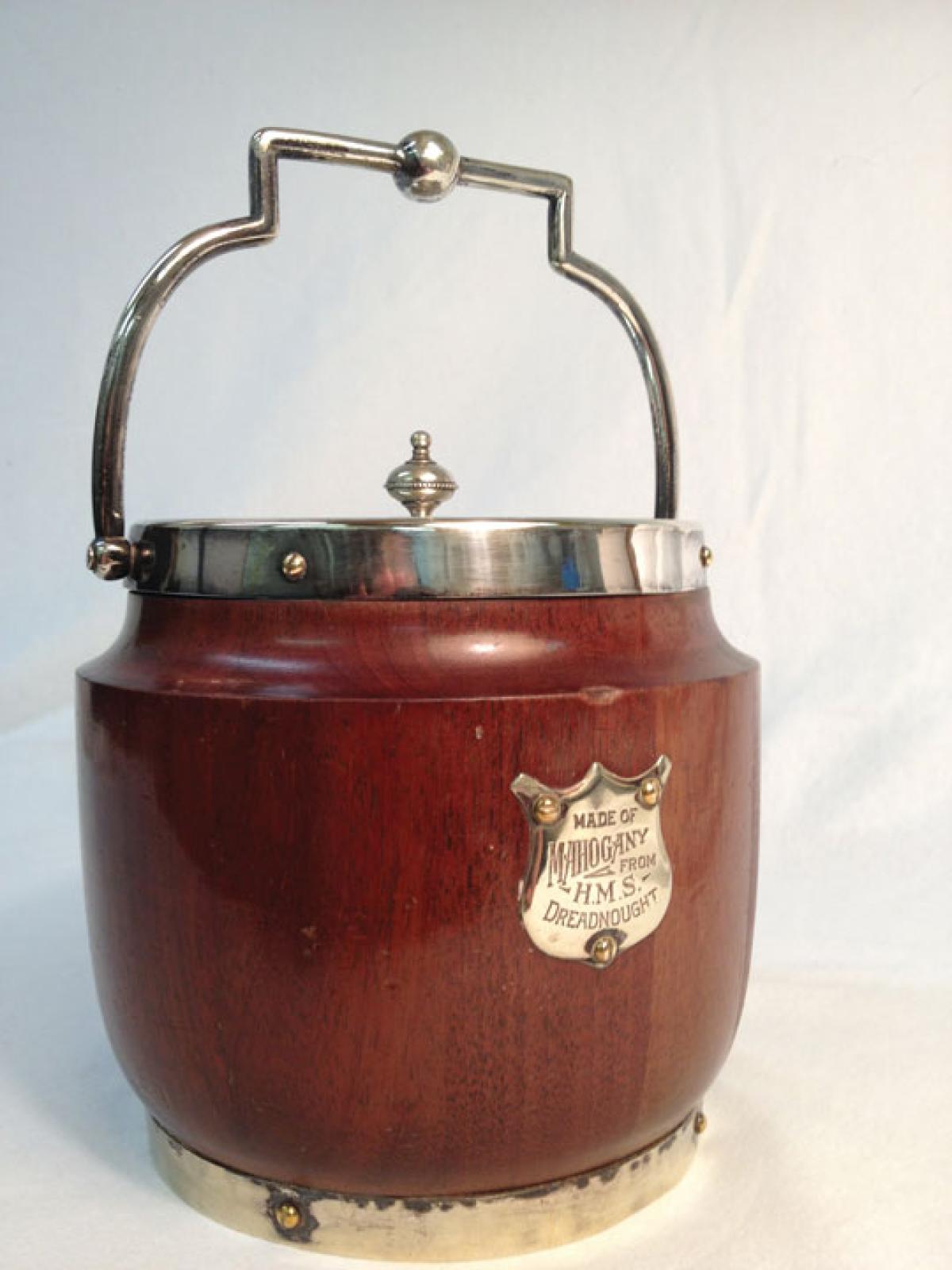When Royal Navy Admiral John “Jackie” Fisher saw his brainchild, HMS Dreadnought, slide down the ways at her launch on 10 February 1906, could he have imagined that parts of that revolutionary battleship would one day end up as ashtrays and biscuit barrels? Possibly, as making mementoes from material salvaged from famous warships was popular in his day. Five such items are illustrated here, from the private collection of U.S. Naval Institute member Andrew K. Blackley. The biscuit barrel (more commonly known Stateside as a cookie jar) was made by Hammond, Creake, and Company of Sheffield, England, and consists of a ceramic jar enclosed by wooden barrel staves, bound by silver-plated hoops and with an Art Deco–style lid and handle. The ashtray or small bowl, 4 inches in diameter, is stamped “Copper from H.M.S. Dreadnought Dismantled 1924.” Keeping company with Mr. Blackley’s Dreadnought artifacts are three related teak items—a napkin ring and matchstick holder from the super-dreadnoughts HMS Warspite and Queen Elizabeth, respectively, and a letter opener bearing a raised metal plate proclaiming “Made From Teak of HMS Iron Duke Admiral [John] Jellicoe’s Flagship Jutland 1916.”
An unprecedented amount of salvage material became available as the Dreadnought, whose launch had set off a naval arms race, and 18 of her siblings, once the cream of the Grand Fleet, were scrapped under the terms of the Washington Naval Treaty of 1922. Although the great dreadnoughts are long gone, the naval historian can still hold a tiny piece of such historic warships and contemplate “how the mighty are fallen.”



